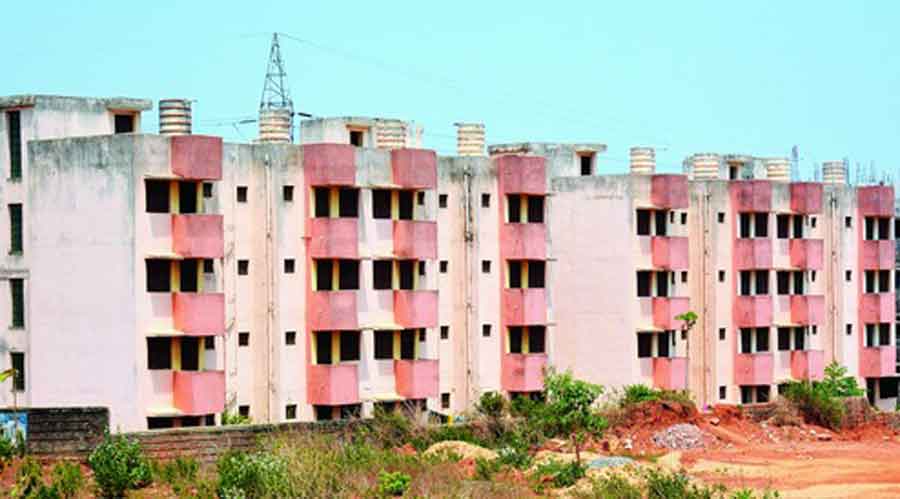The Narendra Modi government’s stated goal of ensuring housing for all by 2022 appears unlikely to be met given the slow pace of construction and delay in expanding the beneficiaries’ list, social activists have told The Telegraph.
While launching the Pradhan Mantri Awas Yojana (PMAY) Gramin on April 1, 2016, Modi had gone by the findings of the Socio Economic Caste Census of 2012 and set a target of building 2.95 crore houses by 2022.
However, by 2019, the state governments had identified another 3.67 crore households that lacked houses, raising the scheme’s possible target to 6.62 crore houses.
While a panel formed by the rural development ministry has cleared the additional beneficiaries, the finance ministry has not yet committed funds for the extra houses, preventing the new beneficiaries from being officially added to the list.
According to a report from the parliamentary standing committee on rural development, headed by Shiv Sena member Prataprao Jadhav, the government had built only 1.04 crore houses by the first week of June last year.
The rural development ministry has told the standing committee it has taken up the matter of the additional beneficiaries with the finance ministry but no decision has been taken.
Rural development ministry officials told this newspaper that any further delay in the matter — already hanging fire for nearly two years —would jeopardise the chances of achieving “housing for all” by 2022.
Social activists Nikhil Dey from the Mazdoor Kishan Shakti Sangathan, which works on the implementation of rural development programmes in Rajasthan, and Anees from Ekta Parishad, which works on “housing for all” in Madhya Pradesh, said meeting the 2022 deadline would be impossible.
“One key reason for the delay is the lack of funds provisioning. A substantial number of houses are yet to be constructed from the original target. I doubt they can even meet the original target (by 2022),” Dey said.
Anees said that even if the original target of building 2.95 crore houses by 2022 was achieved, it would not be “housing for all”.
He said the scheme’s “centralised and uniform standard” too needed to be revised.
“For instance, in some (forest) areas, the people do not want pucca houses, but the scheme only allows pucca houses. Such problems too contribute to the slow progress of implementation,” Anees said.
Under the scheme, the government provides Rs 1.2 lakh and Rs 1.3 lakh per house in the plains and hills, respectively. The parliamentary committee has recommended the amounts be increased.
An email sent on Monday to the rural development ministry seeking the reasons for the delays in construction and beneficiary expansion had evoked no response till Sunday night.
The erstwhile UPA government used to run the Indira Awas Yojana, which had no set targets. The Modi government replaced the scheme with the PMAY Gramin, providing for pucca houses with basic amenities for rural families that had no houses or lived in kutcha or dilapidated houses.










